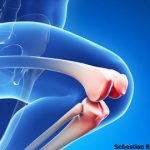(Reuters Health)—Total knee replacement can usually relieve pain and improve function, but a nonsurgical regimen can also be effective in some people without posing the complication risks of surgery, according to a new study.
The study found that while 85% of patients who underwent surgery showed clinically-significant improvement after one year, so did 67% assigned to a combination of supervised exercise, use of insoles, pain medication, education and dietary advice.
“It won’t do any harm trying the nonsurgical treatment,” chief author, Dr. Soren Skou of the University of Southern Denmark in Odense, told Reuters Health. “I hope this will give a more balanced discussion of whether or not to have the surgery.”
There’s little debate that knee replacement helps many people, and the new study of 100 patients confirms it. Surgery patients didn’t show just some improvement. They registered far less pain and disability than those assigned to the non-surgery group.
Yet the study was needed because as many as 1% of surgery patients die within 90 days of their operation and about one in five have residual pain at least six months after the procedure, said Dr. Jeffrey Katz of Harvard Medical School in Cambridge, Massachusetts, in an editorial published with the study online Oct. 21 in the New England Journal of Medicine. “Until now, we have lacked rigorously controlled comparisons between total knee replacement and its alternatives.”
“People need to understand and respect that knee replacement is not without complication. Knee replacement is a big surgical procedure and there are risks associated with it,” Dr. Andrew Pollak, chairman of orthopedics at the University of Maryland School of Medicine in Baltimore, told Reuters Health.
The study “really emphasizes what we suspected all along—total knee replacement works. It will be obvious to many of us who take care of patients. But for patients with significant symptoms and evidence of arthritis, total knee replacement is a very effective way of improving quality of life,” said Pollak, who was not involved in the study. “Therapy alone has a role. It does help certain patients. It can certainly prolong the time to when knee replacement is necessary.”
More than 670,000 total knee replacements are done in the U.S. each year at a cost of $36.1 billion.
All of the patients in the study had moderate to severe knee osteoarthritis. The team measured symptoms, pain and quality of life over a one year period.

